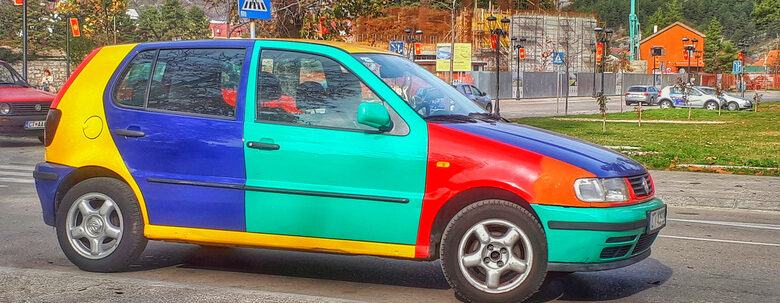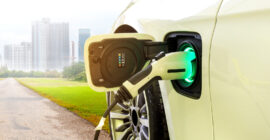Volkswagen has fun when it comes with Harlequin. The name and paint scheme may originate from comedy, characters like clowns from the past, who wore colorful costumes and like to play tricks on people. Sorry for Batman fans, we don’t talk about Harley Quinn who swings bats here.
In 1995, European arm Volkswagen wanted to do something different to celebrate the launch of its newest car, Polo Harlekin. It shows the concept of a new modular design called “baucastensensystem,” where customers can configure their vehicles using a color code system to select drivetrain, equipment, options, and paint.
VW decided to be fun to literally represent its new system through a car paint scheme. Some believe this idea returned to the 1960s when advertisements show the same multi-hued beetle herald how easy it is to get a part (exchanged) for his little bug. The four colors sprinkled on the body of the chagall blue, ginster yellow, Pistachio Green, and Red Tornado.
German car makers only intend to make this 1,000 quilated plain. However, it turns out that demand is significant enough to produce between 3,100 (through motorcycle biscuits) and 3,800 (through the truth about cars) instead. Marketers, never afraid to milk a dead horse – or polo in this case – decided to provide a very limited rainbow paint work in North America the following year.
VW works harder with kaleidoscopic colors
In 1996, VW offered a “mass” of 264 GL Harlequins five doors, made easily produced at the Puebla Factory, Mexico. Yes, you read it correctly: two hundred and sixty four. And in the January 2021 article on Drive, almost half of them are still on the road in 2019.
Each harlequin is fully sprayed in one of the four colors offered. Only after the production worker, the worker finished building a car, the bolt exterior panel was released and was quickly exchanged (through the truth about the car). The owner can find out what the original basic color by looking at the rocker panel or pillar-c (via motorcycle biscuits).
But that is not random. Volkswagen outlines the method for his madness in a graph that shows which panel goes to which car and where he should go. Another interesting good news is that Chagall Blue and Pistachio Green are exclusive European colors that are not found in the American golf model, according to the truth about cars.
With a limited production process, this Psychchedelic golf is not too often sold. About a year ago, Harlequin ’96 with 78,870 on the Odometer sold for $ 25,000. The price of the original retail sticker is $ 15,120, which is not a very bad investment when you think most of the new cars lose about 15% of their value every year after the first year.



